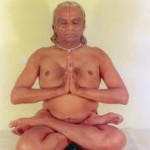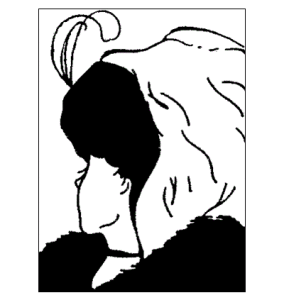(For a review of the skandhas, please see the previous few posts.)
The Three Key Steps
Somatic meditation practice takes us right to the second skandha, sensation, where the nervous system has immediate encounters with the more tangible aspects of the world of form. This realm is pre-story, pre-thought and thus where we want to ground our attention. Meditation begins with gaining proficiency in directing and sustaining the faculty of attention and the sensory realm is a great place to start. Following the breath is the foundation of somatic meditation and one of the best ways of reigning in the wandering mind away from its addiction to thought. As simple as it sounds, this process takes years of practice and even then, the mind, by nature, wants to keep moving. Patanjali describes this concisely and elegantly, in sutras I-12 – I-16, abhyasa and vairagyam, the first practices given in the Yoga Sutras and the root of all to come.
 To practice somatically, sitting, or in any posture, we start with the intention to keep our attention localized in the breath, recognizing that the habitually wandering mind will resist. When the mind wanders off into thought, as it will, we lovingly and compassionately bring our attention back to the breath. We then ask ourselves where in our bodies do we feel the breath most clearly, and that area becomes the ‘seed’ or ‘bija’ for our attention. We are not trying to change or alter the breath, but just feel it, receive and release it, one breath at a time. Our practice unit is ‘one breath’. Then we begin again. Just one breath. This is the first step and amazingly enough, we are always taking the first step.
To practice somatically, sitting, or in any posture, we start with the intention to keep our attention localized in the breath, recognizing that the habitually wandering mind will resist. When the mind wanders off into thought, as it will, we lovingly and compassionately bring our attention back to the breath. We then ask ourselves where in our bodies do we feel the breath most clearly, and that area becomes the ‘seed’ or ‘bija’ for our attention. We are not trying to change or alter the breath, but just feel it, receive and release it, one breath at a time. Our practice unit is ‘one breath’. Then we begin again. Just one breath. This is the first step and amazingly enough, we are always taking the first step.
The area of the body where the breath is felt most clearly is liable to move around and that can be a very revealing experience. Married with attention is an underlying intelligence known in Sanskrit as the buddhi, and as the buddhi awakens, another level of our somatic practice begins to emerge. We may feel that we only feel the breath on the right side, and the intelligence notes that you are unconsciously leaning to the right. A subtle shift of your weight allows the breath to be a little more even. Notice this was not an attempt, based upon an idea, to change the breath, but a felt recognition of a somatic imbalance that, when adjusted, released the breath into a more open spacious feeling.
A similar phenomenon can occur when you notice the sensations of breath remains up in the chest. The buddhi recognizes that this is caused by tension in the belly, and when you drop the belly, the breath opens more fully into the lower body. How does the buddhi know this? Because you have been practicing for a long enough time that it has learned what that sensation is trying to tell you. Those of you following these blog post for several years might recognize this as ‘samyama in asana‘ where, as Iyengar described, the organs of action, organs of perception and the intelligence become a single conscious movement in the entire body. The term ‘samyama’ comes from Patanjali’s sutras III-1 – III-8, and samyama in asana is somatic meditation. This awakening of the buddhi/intelligence is the second step in somatic meditation and the possibilities growth here are infinite.
The third step begins with allowing the self organizing capacities of the body awakened in this practice to continue on, sustaining the posture, and to let your attention move to the overall  field of energy that extends out beyond your skin. This field is transparent, and if you can relax without letting your mind wander, your attention may flip, like with the famous young woman/old woman optical illusion, from being the field, to being infinite, timeless spaciousness, the Ground of Being in which the field is continuously arising.
field of energy that extends out beyond your skin. This field is transparent, and if you can relax without letting your mind wander, your attention may flip, like with the famous young woman/old woman optical illusion, from being the field, to being infinite, timeless spaciousness, the Ground of Being in which the field is continuously arising.
When you can rest in this stillness stably, and recognize ‘I am This’, you will have the direct experience of both the PYS I – 3: tada drashtuh svarupe avasthanam: then the identity of the Self (I am) with pure Awareness becomes stable; and the famous Vedantic mahavakya, ‘Tat Vam Asi’ or That You Are. The first section of the 46th Psalm verse 1, Be still, and know that I am God, unfolds the Christian version of the same sutra, however, with usually a different interpretation.
Resting in stillness is likely to be an unstable state and the mind will return to thought and the process begins again; pause, relax, feel the breath, allow it to flow. We are always beginning again. Somatic meditation can be done in any pose, not just seated ones. Restorative yoga poses offer many different opportunities to explore samyama. Remember, step one is to bring your attention to the breath/qi/pranic flow, step two is to open to the deeper realms of intelligence waiting to be discovered, and step three is to expand towards and then rest in the stillness when the intelligence takes over the operation of the pose. The stronger the coherence in the energy fields, the easier it is to rest in silence without distraction.
When you are not in a somatic meditative state, the intelligence continues to operate, keeping the flows of digestive peristalsis, circulation, respiration and cerebro-spinal circulation going, but it is non-conscious and shaped by old habits in the musculo-skeletal and nervous systems. These patterns tend to become more deeply embedded in the tissues and more difficult to transform. This is why aging brings out all sorts of issues. Through conscious somatic meditation, the opportunity arises to let the entangled energy patterns to release into more coherent, more efficient ones. Aging, if experienced as a state of continuous somatic meditation, can then be a way to become less stuck and more open, rather than the opposite.
The education of the buddhi is crucial for this process to deepen and build greater coherence. When are attention and psychic/mental energy is constantly being consumed by trivia or dysfunctional thought patterns, learning ceases. The reliance on habitual patterns can be very useful if they are wisely chosen and continually checked for relevance. This frees up attention for observing what is new, more subtle, more ineffable and allowing this new information to be integrated. This is described by Patanjali in sutras I-23 – I-27 as ‘ishvara pranidhana’. Difficult to translate, Ishvara can be seen as the foundation intelligence of the universe, and all of its manifestations, and all of its possibilities, in all realms of creation. Pranidhana is intention-less total devotion or bhakti, here dedicated to the mystery of Ishvara. In somatic meditation, this is a living presence.
The buddhi is nurtured in silence, so this third step cannot be over emphasized. It is also the most elusive and challenging, as the mind really dislikes stillness and rushes in to fill the space. Discipline is crucial in not getting sucked into the habit. Another challenging aspect is that often, when the buddhi is engaged, the thoughts can be ‘enlightening’, as they are coming from a deep connection to the core of being. The fourth klesha ,asmita, mentioned by Patanjali in II-6, addresses this dilemma. The buddhi is still of the world of form, and the small self insidiously attaches to and takes claim for the buddhi and the revelations. Another version of possible confusion arises because the buddhi is channeling insight is still a transient state that will come to an end. If we ‘believe’ that this is the awakened state, when it does end, as it will, we are likely to feel that this means we have ‘lost’ our way and plunge back into the confusion of the dysfunctional skandhas.
In the silence of stillness, the egoic thoughts begin to dissolve. In ishvara pranidhana, the devotional mind set, coming from the heart, also helps negate the attempts of the egoic self to stake its territory.
In the next post, I will present some alternative poses to practice and more subtle layers of the energy fields to explore.

